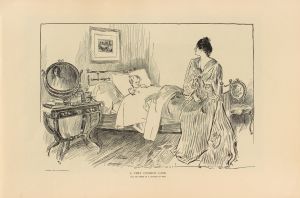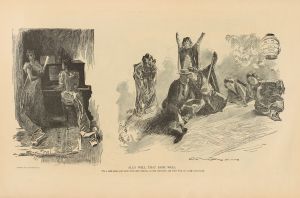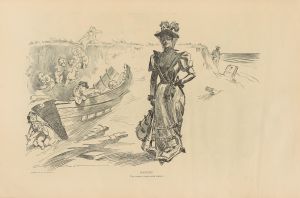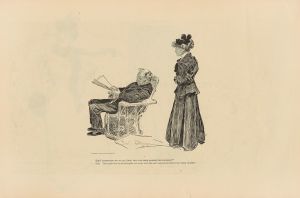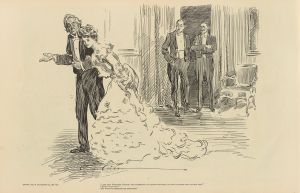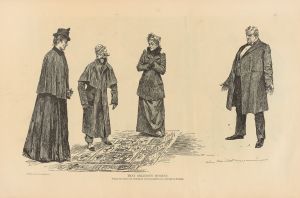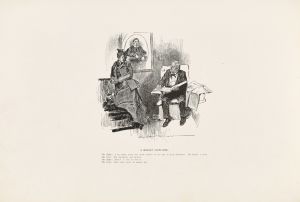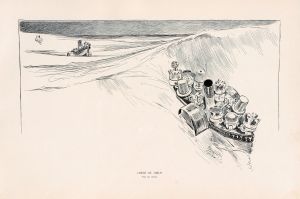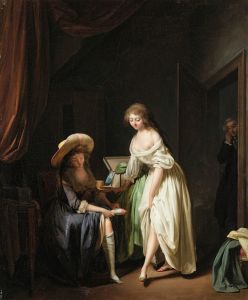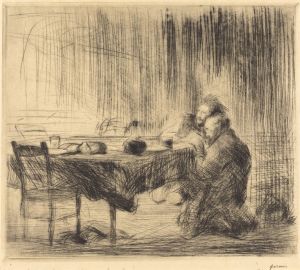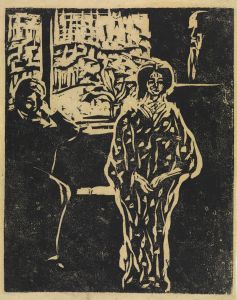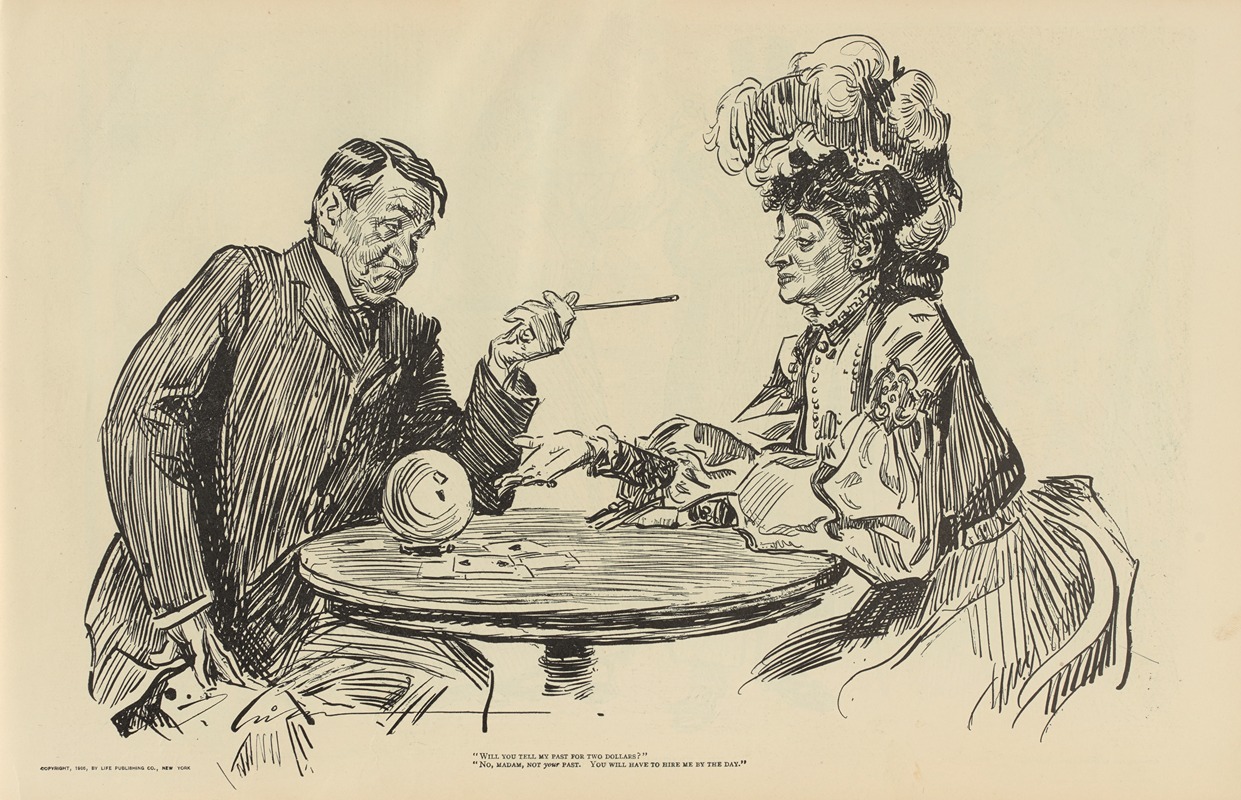
‘Will you tell my past for two dollars’
A hand-painted replica of Charles Dana Gibson’s masterpiece ‘Will you tell my past for two dollars’, meticulously crafted by professional artists to capture the true essence of the original. Each piece is created with museum-quality canvas and rare mineral pigments, carefully painted by experienced artists with delicate brushstrokes and rich, layered colors to perfectly recreate the texture of the original artwork. Unlike machine-printed reproductions, this hand-painted version brings the painting to life, infused with the artist’s emotions and skill in every stroke. Whether for personal collection or home decoration, it instantly elevates the artistic atmosphere of any space.
Charles Dana Gibson was an influential American illustrator best known for his creation of the "Gibson Girl," an iconic representation of the American woman at the turn of the 20th century. One of his notable works is the illustration titled "Will you tell my past for two dollars?" This piece, like many of Gibson's works, captures the social dynamics and cultural nuances of its time.
"Will you tell my past for two dollars?" is a black-and-white illustration that reflects Gibson's keen eye for detail and his ability to convey complex social interactions through simple yet expressive line work. The illustration typically features a scene involving a fortune teller and a client, often a young woman, which was a popular theme in the late 19th and early 20th centuries. This setting allows Gibson to explore themes of curiosity, skepticism, and the human desire to understand one's past and future.
Gibson's work was widely published in magazines such as Life, Harper's Weekly, and Scribner's, where his illustrations reached a broad audience and influenced public perceptions of fashion, beauty, and social roles. The "Gibson Girl" became a cultural phenomenon, embodying the idealized image of youthful, independent, and confident women. Although "Will you tell my past for two dollars?" does not specifically feature a "Gibson Girl," it shares the same stylistic elements and social commentary that characterize Gibson's broader body of work.
The illustration's title, "Will you tell my past for two dollars?" suggests a transactional relationship between the seeker and the fortune teller, highlighting the commodification of personal insights and the era's fascination with mysticism and the occult. This theme resonates with the societal shifts of the time, as people grappled with rapid changes brought about by industrialization and sought comfort in understanding their place in the world.
Gibson's illustrations are notable for their wit and subtle humor, often poking fun at societal norms and expectations. In "Will you tell my past for two dollars?" the interaction between the characters may imply a critique of the superficiality of such exchanges or a commentary on the lengths to which individuals will go to seek validation or reassurance.
Charles Dana Gibson's legacy as an illustrator is significant, as his work not only captured the essence of his era but also influenced future generations of artists and illustrators. His ability to encapsulate the zeitgeist of the early 20th century through his art remains a testament to his skill and insight. While "Will you tell my past for two dollars?" may not be as widely recognized as some of his other works, it nonetheless contributes to the rich tapestry of social commentary and artistic achievement that defines Gibson's career.






